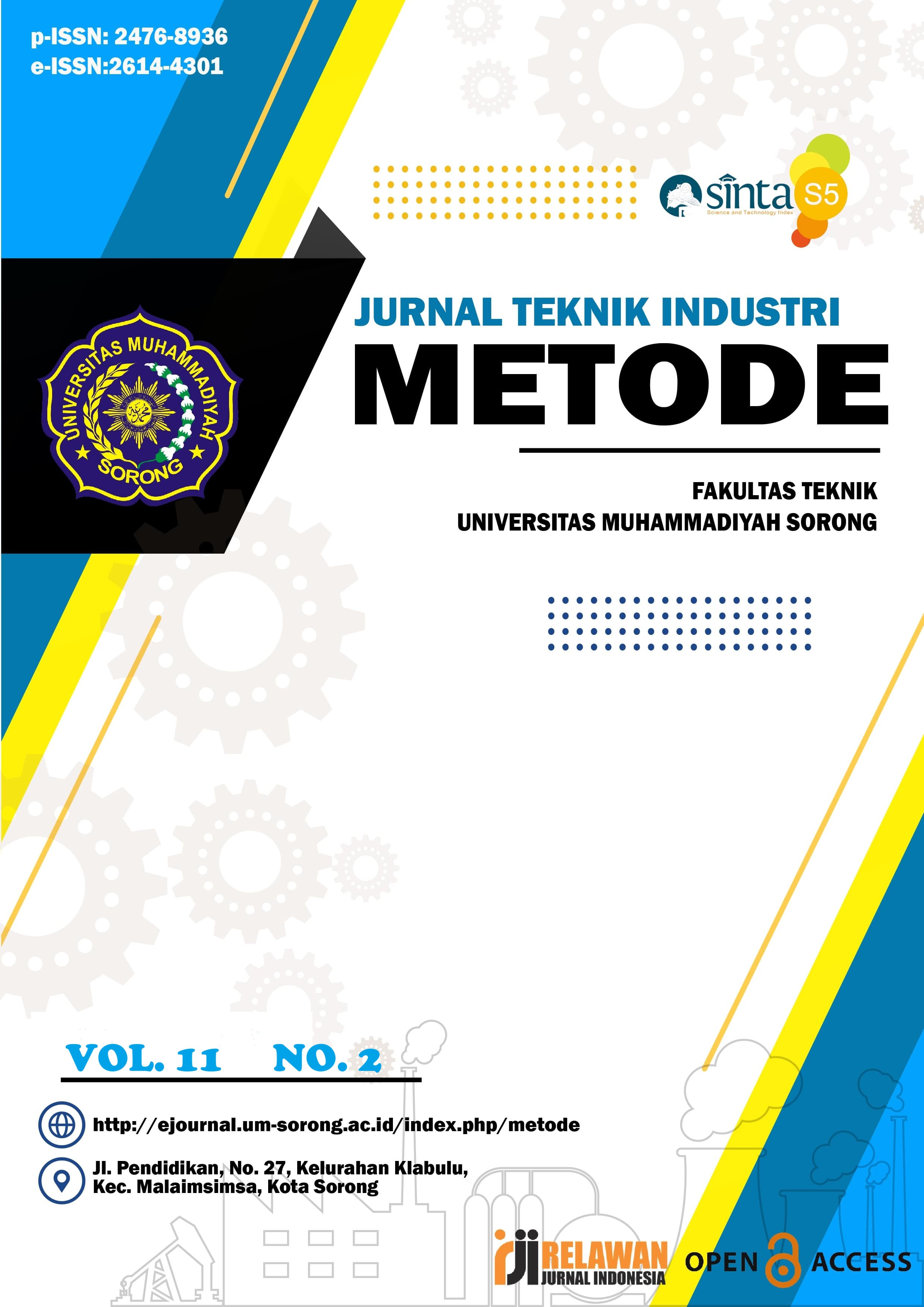Quality Control of E-1440 Compound Product Part Number 7105 - 4764 Using the Seven Tools Method
DOI:
https://doi.org/10.33506/mt.v11i2.4710Keywords:
E-1140 compound, quality control, seven toolsAbstract
The effectiveness of the production process and product quality are crucial in determining how well a company competes. Product quality is one of the main factors in determining the success of a company. PT. XYZ is a manufacturing company engaged in the automotive rubber spare parts industry. One of the products produced is the EPDM-1440 rubber compound or can also be called the E-1440 compound. The E-1140 compound that has been turned into a rubber product has a part number. This study aims to identify the most dominant type of defect or so-called NG (Not Good) and analyze the causes of defects in the E-1440 compound product Part Number 7015-4764 at PT. XYZ. The research method used is the Seven Tools, which includes histograms, Pareto diagrams, fishbone diagrams, U-control charts, and Why-Why Analysis. Based on data for six months September 2024 - February 2025, it was found that the NG type of slit tear was the most dominant with a total of 375 units (37.24%). The U control chart shows that there are data points that are outside the control limits, therefore a revision is made to the data that is outside the control limits and the average product damage (CL) is 0.007, the upper control limit (UCL) is 0.020 and the lower control limit (LCL) is -0.005. The main cause of the emergence of NG torn slits is due to humans, then improvements are proposed by focusing on improving operator training..
References
Alifka, K. P., & Apriliani, F. (2024). Analisis Pengendalian Kualitas Produk Menggunakan Metode Statistical Process Control ( SPC ) dan Failure Mode and Effect Analysis ( FMEA). Factory : Jurnal Industri, Manajemen dan Rekayasa Sistem Industri, 2(3), 97-118. https://doi.org/10.56211/factory.v2i3.486.
Ansori, F. A., & Gusniar, I. N. (2023). Penerapan Metode Seven Tools pada Pengendalian Kualitas Produk Cacat di PT. XYZ. Jurnal Serambi Engineering, 8(2), 5970–5978. https://doi.org/10.32672/jse.v8i2.5991.
Fakih, A. Z., & Marlyana, N. (2023). Pengendalian Kualitas Pada Proses Produksi Untuk Meminimalisir Cacat Produk Dengan Metode Statistical Process Control (SPC) Dan Failure Mode And Effect Analysis (FMEA). Jurnal Ilmiah Sultan Agung 2(2), 333–341.
Hendy Tannady. (2015). Pengendalian Kualitas, Yogyakarta, Graha Ilmu
Kristianto, F. P., & Ulfia, Y. N. (2024). Pengendalian Kualitas. Jawa Tengah, Lakeisha.
Kuswardana, A., Eka, N., Natsir, H., Teknik, S., Kerja, K., Teknik, J., & Kapal, P. (2016). Analisis Penyebab Kecelakaan Kerja Menggunakan Metode RCA ( Fishbone Diagram Method And 5 – Why Analysis ) di PT . PAL Indonesia. CORE (COnnecting REpositories), 141–146.
Nilda. (2018). Manajemen Kualitas Terpadu. Sidoarjo, Indomedia Pustaka.
Nursyamsi, I., & Momon, A. (2022). Analisa Pengendalian Kualitas Menggunakan Metode Seven Tools untuk Meminimalkan Return Konsumen di PT. XYZ. Jurnal Serambi Engineering, 7(1), 2701–2708. https://doi.org/10.32672/jse.v7i1.3878
Pandria, T. M. A. (2022). Analisis Penyebab Low Level Raw Water Menggunakan 5 – Why Analysis dan Fishbone di WTP PT . PLN UPK Nagan Raya. Jurnal Serambi Engineering,7(3), 3414–3420. https://doi.org/10.32672/jse.v7i3.4413
Puspita, K., Ade, D., Diem, R., Industri, M., Tinggi, S., & Wastukancana, T. (2023). Pengendalian Kualitas Produksi Benang Partially Oriented Yarn Dengan Menggunakan Metode Seven Tools ( Studi Kasus Departemen POY CP-3 PT . Indorama Synthetics Purwakarta Tbk ). Jurnal Teknologika, 13(2), 1–12. https://doi.org/10.51132/teknologika.v13i2.294
Ramdhani, M. R., & Widowati, I. (2024). Pengendalian Kualitas Produk Cylinder Head Dengan Menggunakan Metode Seven Tools Di PT. X. Jurnal Teknologika, 14(2), 518–527. https://doi.org/10.51132/teknologika.v14/2
Shiyamy, A. F., Rohmat, S., & Sopian, A. (2021). Artikel analisis pengendalian kualitas produk dengan. Jurnal Ilmiah Manajemen, 2(2), 32–45. https://doi.org/10.15575/jim.v2i2.14377
Wahyuni, H. C., & Sulistiyowati, W. (2020). Pengendalian kualitas Industri dan Manufaktur dan Jasa. UMSIDA Press.
Downloads
Published
How to Cite
Issue
Section
License
Copyright (c) 2025 Sukma Ambarwati, Daisy Ade Riany Diem, Elly Setiadewi

This work is licensed under a Creative Commons Attribution-ShareAlike 4.0 International License.









